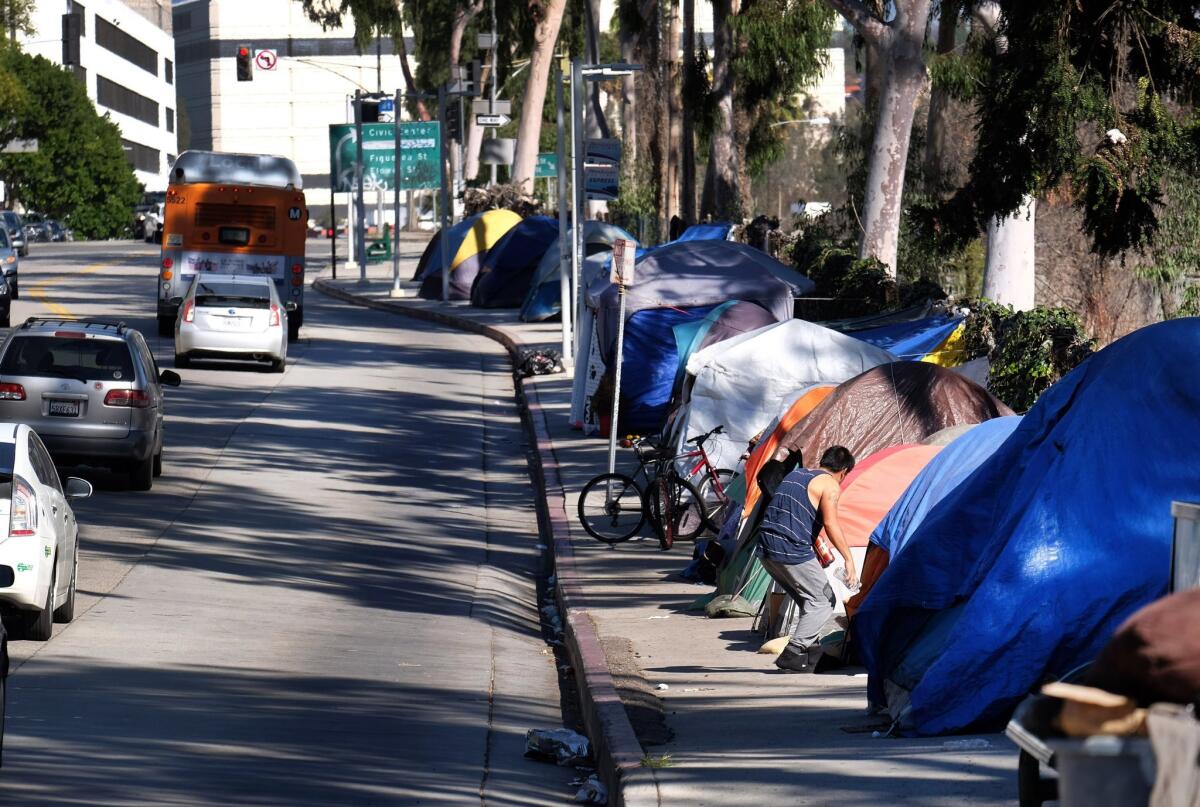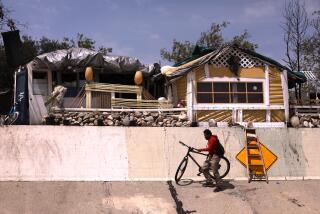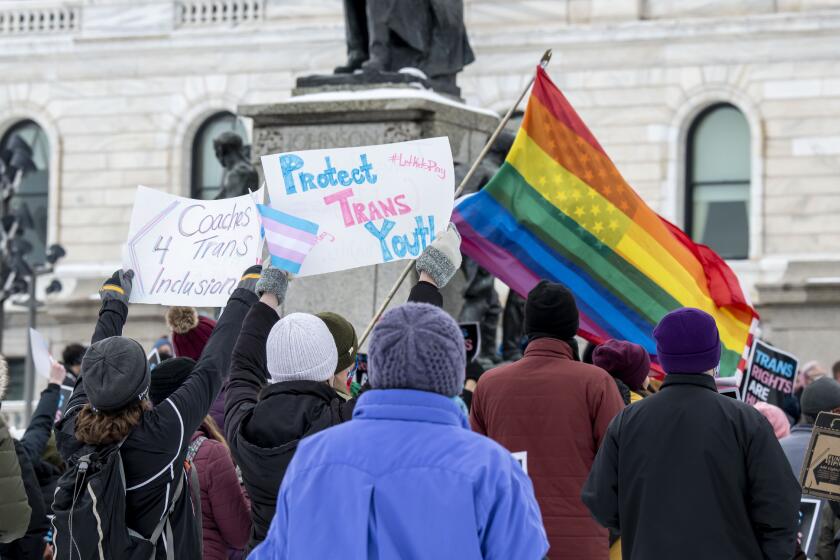Editorial: Tiny houses? Safe parking? Let’s give homeless people alternatives to the sidewalk

Building housing for homeless people in the city of Los Angeles is an infuriatingly slow process. Even the so-called bridge shelters that are supposed to be an interim solution while we wait for new permanent housing have been taking a year or two to go up.
Meanwhile, tent encampments continue to multiply on sidewalks, in parks, under freeway overpasses — and frustration over their presence grows. Elected officials, advocates for the homeless and service providers must think outside the tent, so to speak, to come up with places for homeless people to live that won’t leave them vulnerable to the weather, crime and the many indignities of life on the street.
Here are some ideas. They are not long-term solutions to the problem of homelessness, and they’re by no means ideal. But neither is the situation we have on the streets today.
The city could expand “safe parking” lots for people who live in their cars. This is being done throughout Los Angeles with some success. Let’s do more. City officials need to find more vacant lots or convince more churches, temples and owners of commercial properties with parking lots that are empty at night to open them to people living in their cars. With block-by-block restrictions against overnight parking proliferating and shelter space remaining scarce, do we really want people climbing out of their vehicles and sleeping on sidewalks at night just to avoid getting a ticket they can’t afford?
Tiny houses, which are wooden structures the size of garden sheds, have become a clever alternative for homeless people who otherwise would have to sleep on a street. They are, generally, rudimentary and usually lack plumbing and heating. They’ve run into trouble, understandably, when people have tried to park them on sidewalks or at curbs here in L.A. But it might make sense to set up one or more enclaves of city-supplied tiny houses — the way Portland, Ore., as done on city-owned property — somewhere as an experiment and figure out how to provide water, sewer and power services.
Here’s another idea that is neither terribly appealing nor a long-term solution, but which should not be ruled out without consideration. On a vacant lot or other public space, the city could set up emergency-response-style shared dwellings — larger than tiny houses but less permanent in nature — that offer privacy, security, restrooms, trash collection and outreach services. The presence of security would mean less risk of street crime, and people wouldn’t have to worry about the arrival of police officers and sanitation workers telling them to move along. L.A. City Councilman Paul Koretz introduced a motion to study the Outdoor Emergency Shelter that the city of Modesto has set up with an array of individual tents in one location. Koretz asked the chief administrative officer to look into the feasibility of doing some version of that on at least one location in every council district.
Again, as with any new approach to the crisis, the point isn’t to concentrate hundreds of homeless people in remote areas where they’ll be out of sight, out of mind. It’s to provide safer, healthier alternatives to street encampments that are within easy reach of transportation and social services, and that can be brought to fruition quickly. Admission — it should go without saying — should be totally voluntary. These are not relocation camps.
To be honest, this sort of clustering already exists in a less formal, less regulated sense. In parts of the city where tent encampments are, in fact, tightly knit groups, there are service providers who are already working with and treating them as communities. Service providers are getting them things they need right now — trash receptacles, brooms, portable toilets — to make the encampment a healthier place to live while people wait for housing.
None of these are solutions to the problem of homelessness. They are at best short-term measures to try to address the chaotic, tragic and dangerous situation we have on the streets today. We don’t want people living in improvised dormitories or garden sheds permanently. But to ignore the fact that they’re already living in tents and that there is scarce housing and shelter doesn’t help anyone.
In any case, what we don’t want is to make homeless people invisible, lulling city residents and elected officials into thinking a grove of tiny houses or a lot of parked cars has solved homelessness. Only housing, treatment, service and jobs will solve this problem in the longer run.
More to Read
A cure for the common opinion
Get thought-provoking perspectives with our weekly newsletter.
You may occasionally receive promotional content from the Los Angeles Times.










